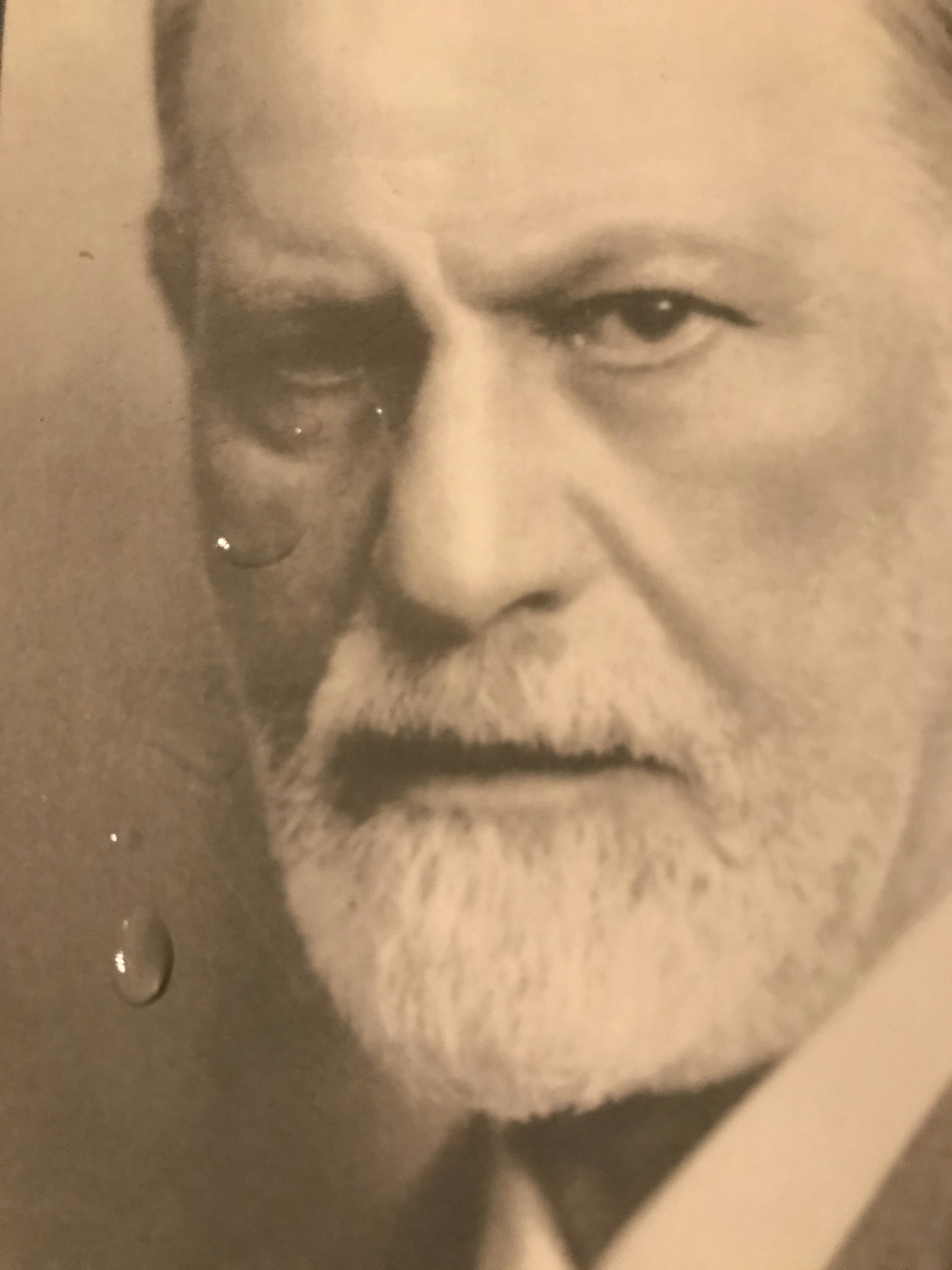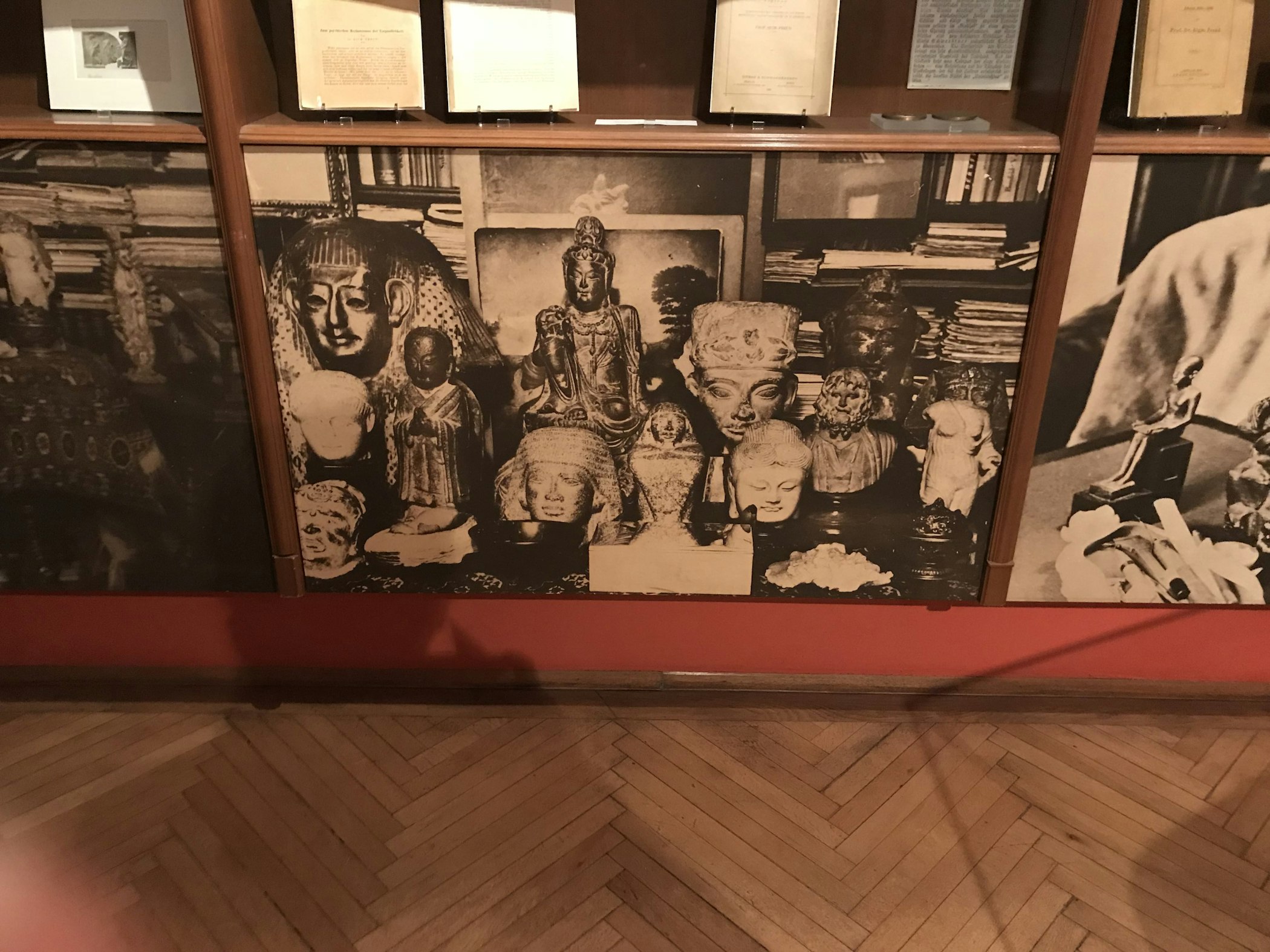Hagas lo que hagas hazlo con tu corazón y si vez llorar a alguien alcánzale tu pañuelo. (Whatever you do, do it with your heart, and if you see someone cry, hand them your handkerchief.)
Blanca de Valero, 2007Of all the Paracelsan concepts … the Aquaster [aqua-astrum/water-star] comes closest to the modern concept of the unconscious … This is in keeping with the axiom from ‘Tabula smaragdina’: ‘What is below is like what is above.’
Carl Jung, Alchemical Studies, 1967, 140The German word unheimlich is obviously the opposite of heimlich, heimisch, meaning ‘familiar’, ‘native’, ‘belonging to the home’; and we are tempted to conclude that what is ‘uncanny’ is frightening precise because it is not known and familiar. Naturally not everything which is new and unfamiliar is frightening, however; the relation cannot be inverted … Something has to be added to what is novel and unfamiliar to make it uncanny. Sigmund Freud, “The Uncanny”, Studies in Parapsychology, 1919, 21
Unheimlich is the name for everything that ought to have remained … hidden and secret and has become visible.
Schelling, cited by Freud, “The Uncanny”, 27
Insomniac, around 4:00 AM on Christmas Eve into Christmas day of 2020, I lay wide awake and in deep mourning. I had lost several good long-time friends, or friends of friends or their spouses, in the short span of five months, with two more in December alone, and now my dear cousin just two days previously. Those lost in this relentless barrage were architects, artists, poets, psychotherapists, mathematicians, computational scientists, sociologists, mothers, fathers, grandfathers, spouses, lovers ... One died in his sleep from an accidental overdose of alcohol and sleeping pills. He was a gifted and compassionate ethnographer who throughout his dedicated career had saved many lives of at-risk youth, and gently counselled untold families in his battle over many years against the forces of ignorance, religious dogma, and intractable homophobia. The deep scars of COVID-19 isolation with their relentless insomniac panic attacks became his mortal enemy, after his vast social ocean had dried up overnight. The second friend, born in the Philippines and the spouse of a cherished former student of mine from Sweden, was a brilliant artificial intelligence thinker, designer, and pioneer, working in social banking and the protection of small consumers, promoting inclusivity, equity, sustainability, and the joys of play, died from COVID-19. It was the winter solstice and the day of the grand conjunction of Jupiter and Saturn. They both took him on the rainbow his spouse could see from his ICU window ... They, along with myriad others in the world, I mourn.
Like millions of others this past year, I have felt somewhat untethered from the everyday because of the lockdown and the surrounding death and suffering. It is a sort of liminal space, looking at the abyss that brings back individual traumas and the larger traumas of our human condition and collective existence. Fortunately, in order to convey a few of the thoughts which at present occupy this liminality, the more open format that this essay affords allows me to adopt a less academic tone for this contribution. The complex personal and global circumstances surrounding us seem to welcome, in my view, the possibility of a first-person, and a bit more intimate locution.[1]
That mournful Christmas evening of this past year was also an occasion on which I gratefully found myself in the vast company of my personal library books, which have acted, in their different iterations, as a kind of security blanket since I was an illiterate child of three ‘reading’ on all fours my parents’ and grandparents’ books. I am perhaps more and more that avis rara who, while spending interminable hours on digital screens, still thoroughly enjoys untold hours with the physical object, exercising my sense of touch and reverie, pencil and marker in hand, annotating in the margins, in quiet but animated conversation with their creators.
Because of my pensive mood that evening I gravitated towards a sundry section on psychoanalysis, analytical psychology, alchemy, religion, cosmology, psychogeography, ecology, philosophy, and the political economy of neurocapitalism – quite the witch’s brew, which in this particular case had the flavour and texture of the fresh pineapple juice that had left a few initially unnoticed trace splashes in the form of several juice (jouissance, Lacanian? Feminist? Both?) tear drops falling from an iconic photograph of Freud gracing the cover of Margaret Muckenhoupt’s Freud – Explorer of the Unconscious, which I had just finished reading. It was a kind of Jungian synchronicity and Freudian Unheimlichkeit, which I spontaneously photographed before the juice drops vision dried out and disappeared, and which, uncannily, led me, finally, to a possible narrative thread for this essay: ‘The Tears of Freud’, which my automatic correction function keeps ‘mistakenly’ writing over and over as ‘The Tears of Eros’, a perfect ‘Freudian slip’ synchronically connecting Freud and Bataille for me, as well as some of the issues this writing contends with. The fact that three bigger teardrops could clearly be discerned among an assortment of a few smaller ones enticed me to document this uncanny book-cover happening, which so poignantly captured my mood and the turmoil in the US at the time, as well as reflecting the current global situation, rampant with geo-political tensions, and the painful and unequal human toll of a climate-change-induced pandemic. I could not have known at the time that those three visible teardrops would eventually unfold in this present essay as an intertwined triad: (Un)Heimlich COVID, Vectorialist Techno-Feudal Platform Overlords, and Emotariat Automata.
Freud’s teardrops also extricated from deep within me the last words my beloved nonagenarian mother shared with me a couple of days before she peacefully passed away more than thirteen years ago: ‘Hagas lo que hagas hazlo con tu corazón y si vez llorar a alguien alcánzale tu pañuelo.’ ‘Whatever you do, do it with your heart, and if you see someone cry, hand them your handkerchief.’ In one single final phrase an apt distillation of her exemplary life: wisdom, humility, and compassion, but also a long-term programme for an ethical, active life of love and understanding.
To continue the cycle of uncanny synchronicities, in Professor Freud’s Vienna library studio at Berggasse 19, directly across from his desk on a table featuring part of his precious antiquities collection, a thousand-year-old Sung Dynasty Guanshiyin and a fourteen-hundred-year-old Tang Dynasty Bodhisattva Kuan Shi Yin head graced the psychoanalyst’s gaze. We have an invaluable historical record of the interior of his second-floor apartment, thanks to the daring series of pictures (54 of which were published in 1972 by Basic Books in New York) taken over a few days by the young photographer Edmund Engelman ten days before the hasty departure of the Freuds for London, while the heavy cigar smoker Professor Freud was entering the final phase of his 16-year ordeal with a now terminal and painful cancer – squamous cell carcinoma of the palate – and the Gestapo maintained a constant presence on the top floor of the building. I was able to photograph a couple of Engelman reproductions of the Bodhisattva, placed today where the object used to be in his Vienna library and study, as well as other items in the large apartment museum during my respectful and detailed visit to Berggasse 19 in the company of my beloved long-term partner. I also happened to capture a whimsical view from the outside of a young woman talking on her cell phone in the window that was once Anna Freud’s bedroom, with my cherished partner standing directly below at the front of the building. What a welcome and remarkably peaceful difference from the dark days the persecuted Freuds had to endure!

The Tears of Freud, 2020

Sigmund Freud Museum, Berggasse 19, Vienna, 2017

Sigmund Freud Museum, Berggasse 19, Vienna, 2017
Comments